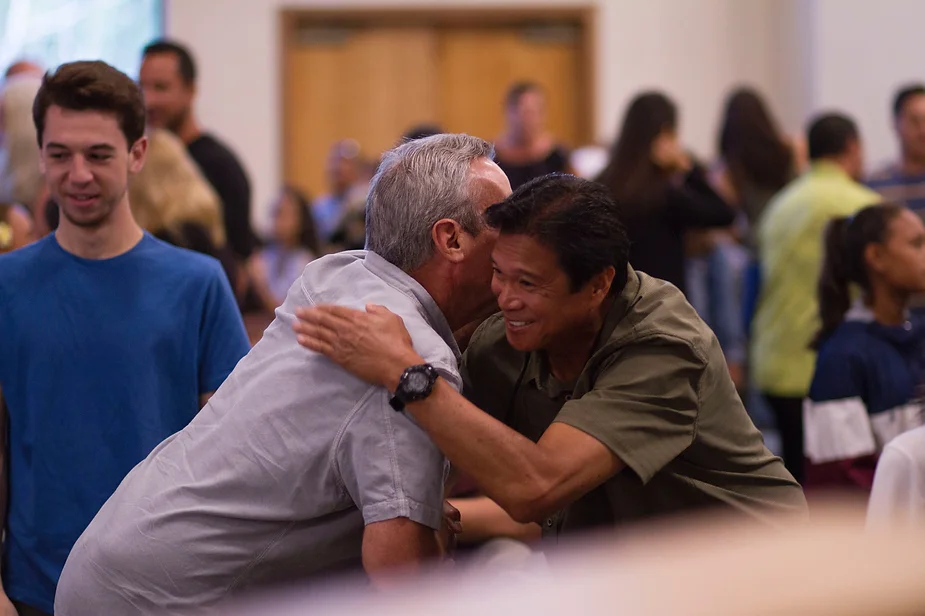
Maryland Reentry Resource Center
Nonprofit Partner
Transforming Futures: MDRRC Gives Hope to Recently Incarcerated Individuals
Many people believe that growth and recovery cannot exist without awareness and sustainability. The Maryland Reentry Resource Center (MDRRC), a nonprofit organization with a mission to support recently incarcerated individuals reintegrating back into society, strives to meet those needs. And even though the staff is only a small team of individuals and volunteers, MDRCC’s goals don’t seem insurmountable with the help of community grants and partnerships.
Through MDRRC, program participants gain access to employment opportunities through landscaping training with MDRRC’s partnership with the Chesapeake Conservation Landscaping Council. Participants also receive a stipend of $15.00 per hour and free transportation. MDRRC has applied for and received previous funding from the Community Foundation of Anne Arundel County—including grants from the Help Our Neighbors Fund.
“You have to have diversified funding streams to be successful,” said MDRRC executive director Vanessa Bright, referring to why the organization applied for (CFAAC)’s grant. “That’s something that we are working on. With (CFAAC) we’ve received [grants] that are general operating.”
General operating grants, which can be used for any purpose in the program, are normally difficult to come by. Grants from the Help Our Neighbors Fund are focused on client assistance—buying work supplies, mental health services, food, clothing, transportation, and accessing government documentation such as IDs and birth certificates—factors that are essential for MDRRC’s clients to succeed.
Another goal of MDRRC is to help reduce recidivism rates. Recidivism occurs when a released individual reoffends or repeats their crime after already having served a full sentence. According to the World Population Review, the state of Maryland’s three year recidivism rate is currently 40.5%. To reduce the risk of recidivism, MDRRC advocates for more standardized programs across the prison system, in which incarcerated individuals are able to receive proper assistance in the earlier stages of transitioning to society once they leave. At this point, some have access to better reentry programs than others—while others may not have access at all.
According to Vanessa, a standard system that would ensure that those who are incarcerated will have what they need, along with additional training and a paid stipend for the jobs that they may already have while serving their sentences. This will allow them to save for security deposits and rent for the first few months after release, as well as obtaining the proper documentation to apply for a position. Also, she believes that recently incarcerated individuals should be able to address substance abuse disorders and mental health issues.
To make sure they accomplish these goals and to ensure the organization’s longevity, MDRRC opened a Nonprofit Designated Fund with intent to endow—the Maryland Reentry Resource Center Fund—with the Community Foundation. Vanessa wanted to take advantage of the waived fees and the prolonged three-year period to raise the $25,000 minimum balance required to establish a permanently endowed fund. Investing in an endowment fund was the route that many colleges and universities follow, and she saw the opportunity in stabilizing MDRRC’s funding sources.
MDRRC also wants to create more awareness about what the organization does for individuals reentering society. To accomplish that, the organization has pushed for more speaking engagements, networking, annual impact reports, quarterly newsletters, outreach, and social media. Invitations to resource events are a plus because they provide the organization the opportunity to promote the services that they offer. Opening the fund with CFAAC will also generate more awareness for the nonprofit.
"To help these new fundholders reach their goals, CFAAC is pleased to be able to promote their new designated or endowed funds through our social media, e-newsletter, website, and during conversations with the donors who look to our foundation for effective nonprofits" said CFAAC Director of Gift Planning, John Rodenhausen.
“You don’t know what you don’t know,” Vanessa said. She hopes that spreading awareness and promoting education about the barriers that incarcerated individuals face in the prison system will help the public develop a sense of compassion and reduce social stigma. Going forward, her goal for MDRRC is to find a place that the organization can rent in order to offer transitional housing and to add monthly support groups for men and women. Another objective is for program participants to attend driving school to obtain a license and hopefully improve their economic mobility. Lastly, MDRRC is working on developing a social enterprise around their stormwater maintenance training program, so that they will be able to partner and share a contract with the city and the county in order to create transitional employment.
“I really hope that we [as the community] will find a way to collaborate [with each other],” Bright says. “There’s enough work that needs to be done. If we work together, we can have a great impact.”